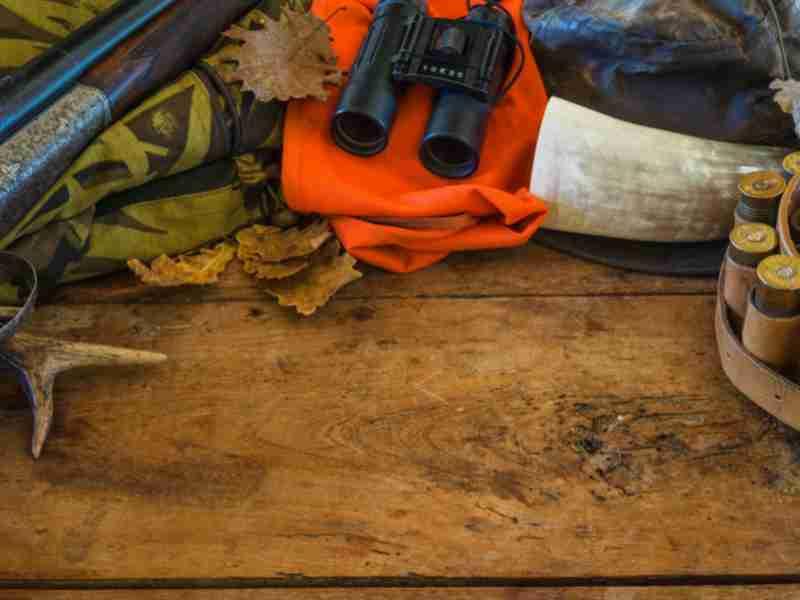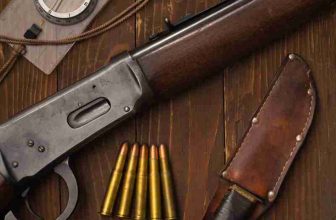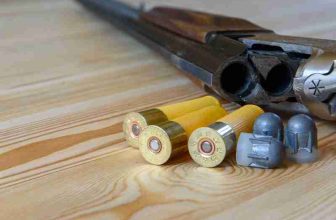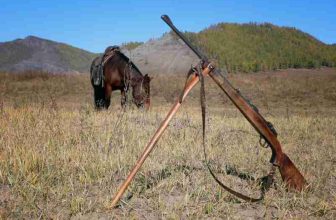
An effective hunting plan not only ensures a successful hunt but also ensures your safety and the safety of those around you. By providing key information to law enforcement officials, such as your location, hunting schedule, and emergency contact details, you can ensure a swift and efficient response in the event of an emergency.
Let’s examine what information should be included in your hunting plan.
Hunting Location and Route:
Your intended hunting location and route should be provided, so law enforcement officials know where you will be. This will help them narrow their search area if they need to locate you. Be sure to include any nearby landmarks that could help pinpoint your location.
Dates and Times:
Law enforcement officials need to know the dates and times you will be hunting so they can start looking for you. Make sure to note what time you are expected back and any other expected stops along your trip.
Emergency Contact Information:
It’s always wise to provide contact information for someone who knows your plans and can alert authorities if you do not return on schedule. This person can provide additional information about your trip that may prove helpful in finding you quickly.
Clothing and Equipment Description:
Describing the clothing and equipment, you will be carrying will help law enforcement officers identify who they are looking for, particularly if multiple people in the area fit the description of the hunter they are searching for.
Medical Conditions/Allergies:
If there are any medical conditions or allergies that emergency personnel should know about, include those details in your hunting plan. This is vital in ensuring a swift response from medical professionals if needed.
Additional Information:
What is one way to find the rules and regulations for the specific species?
To find out the rules and regulations for the particular game you wish to hunt, you can check the laws of the state or province where you intend to hunt. For various species of wildlife, many states and provinces have their laws and hunting seasons, which might vary from year to year.
Check the website of the state or provincial government organization in charge of managing fish and wildlife to learn more about hunting laws and seasons. Examples include:
The Fish and Wildlife Service of the United States (USFWS)
The Natural Resources Department (DNR)
Fish and Game Department (DFG)
the Ministry of the Environment or the Ministry of Natural Resources
Most of these websites provide the following:
- Details on hunting seasons.
- Bag restrictions.
- Hunting zones.
- Other rules are particular to the species you intend to pursue.
The hunting and fishing regulations booklet, typically offered at the vendors of hunting and fishing licenses, sporting goods stores, and other retail establishments, also contains information on hunting regulations and seasons.
It’s also crucial to remember that hunting laws differ by state and province and can change annually. Hence, confirming the most recent details is imperative before a hunting trip.
How can I locate the laws and regulations for the particular species?
The following are some ways to find the rules and legislation pertaining to the game you want to hunt:
Visit the website of the state or provincial government organization in charge of managing fish and wildlife. These websites frequently offer details on hunting seasons, bag restrictions, zones, and other laws particular to the species you intend to hunt.
Check out the hunting and fishing laws handbook, which is often offered by retailers like sporting goods shops and businesses that sell hunting and fishing licenses. These publications include thorough details on hunting and fishing laws, including particular laws for various game types.
Make contact with the state or provincial government department in charge of managing fish and wildlife. They will be able to answer any queries you may have and give you comprehensive information on hunting laws and seasons.
Consult a guide service for fishing or hunting. Many hunting and fishing guides know the rules and legislation that apply to their work area and can offer helpful advice.
Join clubs or organizations dedicated to hunting and fishing; they can inform you about local hunting and fishing laws and restrictions.
Hunting restrictions differ by state and province and might change annually, so it’s crucial to make sure you get the most recent information before leaving on a hunting trip.
What is a reason to plan and prepare for a hunting trip?
For safety and better chances of success, planning and getting ready for a hunting expedition is important. You can consider elements like the weather, the terrain, and the kind of game you will be hunting by organizing and getting ready for a hunting trip. This can assist you in selecting the proper attire, tools, and materials to carry. Planning and preparing for a hunting trip will also assist you in becoming aware of and adhering to any local hunting laws or restrictions that may be in effect.
You can be aware of the safety risks and take the appropriate precautions by planning and preparing for a hunting trip, which includes:
Knowing your hunting region’s limits, geography, vegetation, and wildlife is important.
Understanding the weather forecast, including the temperatures, winds, and precipitation, and how it may impact your hunting trip.
Understanding the local hunting laws and restrictions, such as the hunting season, bag limits, and hunting zones
Using a map and compass in emergencies, as well as understanding how to navigate
Survival in the wilderness requires establishing a shelter, a fire, and a signal to call for help.
You can improve your chances of field success and assist in assuring your safety by organizing and preparing for a hunting trip.
What are the three most important things you need in a survival situation?
The three essential items you’ll need to survive are:
Shelter:
This could be a man-built structure like a lean-to or hut made of trash or a natural structure like a cave or overhang. You can stay warm and protected from the weather by having a shelter.
A heat source:
This could be a fire, a blanket reflecting heat, or a travel stove. Having a warm source nearby can comfort you and help prevent hypothermia.
A way of asking for assistance:
This might be a fire, a mirror, a whistle, or even flares. Your chances of getting rescued can go up if you have a mechanism to signal for assistance.
Shelter, warmth, and signaling for aid are the three items that should come first in an emergency since they are regarded as the “rule of three” of survival. When going hunting, it’s also crucial to have the right tools with you, such as a first aid kit, a knife, a map, and a compass, as well as to be knowledgeable on survival skills.
Which material provides warmth even when wet?
Even when wet, down and synthetic insulation can keep you warm. Both of them have benefits and drawbacks of their own.
Duck or goose feathers are used to make down, which is a superior insulator. It offers a good warmth-to-weight ratio and is lightweight and compressible. However, when down is wet, it loses most of its insulating qualities and takes a while to dry, and if it is left wet for an extended period, it might not be able to restore its insulating qualities.
The artificial fibers used to make synthetic insulation make it a viable substitute for down insulation. It dries faster than down and can still insulate in moist conditions while retaining most of its insulating qualities. In addition to being less expensive than down, synthetic insulation also lasts longer.
Both materials have benefits and drawbacks, so selecting the one best suits your requirements and the activity you’re engaged in is best.
You get lost and need shelter. What should you do first?
Being cool and evaluating your situation is the first thing you should do if you become lost and need refuge. It’s crucial to have a strategy before you leave and to be ready with the right tools and information.
To defend yourself from the weather, look for natural shelters such as caves, overhangs, or dense vegetation.
Build a shelter:
If you can’t find a natural shelter, make a shelter out of items you can find. Depending on the materials and weather, you can construct a lean-to, a shelter made of rubble, or a snow cave.
Make a fire:
If you can, make a fire to keep warm and to call for assistance. To start a fire, use dry materials and fire starters, and be careful to keep it contained and tiny.
Keep yourself and your clothing as dry as possible to avoid getting cold. Create a dry area to sit or sleep by covering it with a tarp or waterproof material.
After creating a shelter and a fire, remain in place and wait for help. You’ll become exhausted by moving, and it will be more difficult for rescuers to find you.
Use your available signaling tools, such as a whistle, mirror, or flares, to call for assistance. Make a lot of noise, scrawl a message on the ground, or start a signal fire if you don’t have signaling equipment.
What is the proper way to start a fire?
There are numerous ways to start a fire, however some fundamental procedures for doing so in the wild include:
Pick a secure area:
Ensure the fire pit is far from trees, bushes, or other potential fire hazards. Remove any twigs, dry leaves, or other debris from the vicinity.
Gather supplies:
Gather larger logs for the fire and dry twigs, leaves, and branches to use as kindling. You can also start a fire with charcoal, paper, or other materials.
Create a fire ring around the pit to contain the fire using rocks or other non-flammable items.
Keep the fire going:
To keep the fire going, add little fuel as needed. Never leave the fire unattended, and be careful to keep it contained inside the fire ring.
When putting out a fire, cover it with water and stir the ashes until they are cool to the touch. Before leaving the area, make sure the fire is fully out.
Take Away:
The information included in your hunting plan can greatly help law enforcement officials if something goes wrong during the hunt. This information can include the specific location of the hunt, the firearms used, the safety protocols in place, and any other contact information that might be needed in an emergency. Making sure that this information is easily accessible to law enforcement can help ensure that you are found quickly and safely if something unfortunate should occur.






